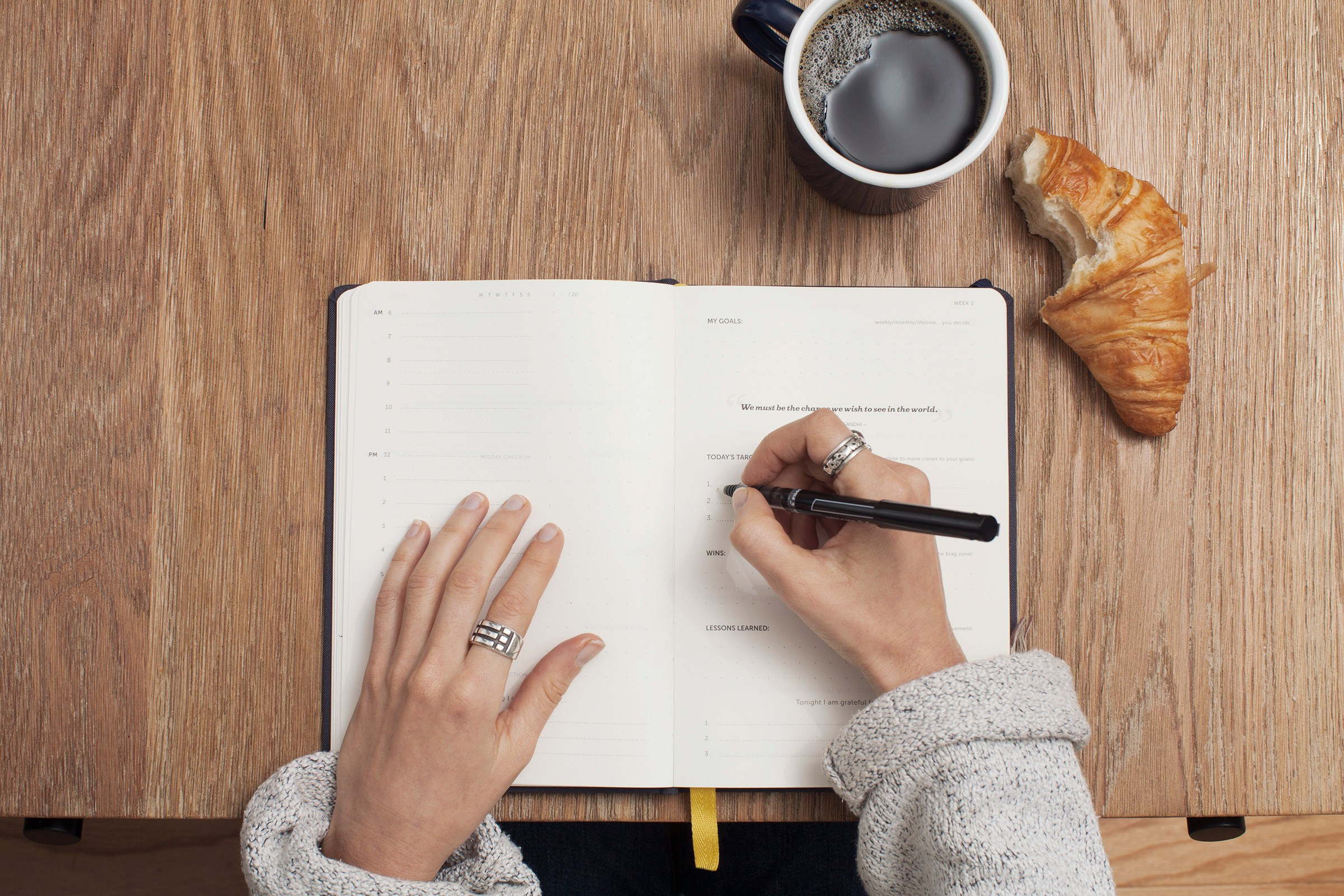Listen to this article
Productivity
How to create a good routine


Productivity
How to create a good routine


Productivity
How to create a good routine



Summary
Routines create structure, reduce decision fatigue and free up mental energy. They also help establish good habits, helping to make behaviours automatic over time. To help create a good routine, consider following these 5 steps:
Identify repeating tasks
Break down the task
Schedule sensibly
Exclude as well as include
Allow the routine to stick
Summary
Routines create structure, reduce decision fatigue and free up mental energy. They also help establish good habits, helping to make behaviours automatic over time. To help create a good routine, consider following these 5 steps:
Identify repeating tasks
Break down the task
Schedule sensibly
Exclude as well as include
Allow the routine to stick
Read this article
1.5m
Identify repeating tasks
Write out what you do, or what you would like to do during a normal week. Then highlight the things that need to be done every day or every week. These are your repeating tasks that can form the basis of a new routine.
Break down the task
Work out the specific steps to do each task that you want to add a routine. For example, you may want a routine to help go for a 30-minute walk every day. What do you need to accomplish that - you need a route that will take about 30-minutes, you need to be dressed and ready to go outside, you may want to have something to listen to or a water bottle to take. Break it all down and list each step as elements of the routine.
Schedule sensibly
Next, think about when you will feel most like doing the routine - if you're an early riser don't schedule a routine for late at night, but even for someone who likes staying up late, if you're planning a routine to practice the drums more, that may not be successful if you are doing it at 11pm.
Exclude as well as include
Routines don't just have to include things you do, they may include things you don't do in order to help build better or healthier habits. A night time routine may include no screens for one hour before sleeping, or a productivity routine might stipulate no social media until after 7pm.
Allow the routine to stick
Give yourself a bit of time for the routine to become a habit but also don't be afraid to tweak it - maybe you didn't give yourself enough time or added a step that you don't like doing. Don't let these things throw the whole routine, just make adjustments to improve them.
Read this article
1.5m
Identify repeating tasks
Write out what you do, or what you would like to do during a normal week. Then highlight the things that need to be done every day or every week. These are your repeating tasks that can form the basis of a new routine.
Break down the task
Work out the specific steps to do each task that you want to add a routine. For example, you may want a routine to help go for a 30-minute walk every day. What do you need to accomplish that - you need a route that will take about 30-minutes, you need to be dressed and ready to go outside, you may want to have something to listen to or a water bottle to take. Break it all down and list each step as elements of the routine.
Schedule sensibly
Next, think about when you will feel most like doing the routine - if you're an early riser don't schedule a routine for late at night, but even for someone who likes staying up late, if you're planning a routine to practice the drums more, that may not be successful if you are doing it at 11pm.
Exclude as well as include
Routines don't just have to include things you do, they may include things you don't do in order to help build better or healthier habits. A night time routine may include no screens for one hour before sleeping, or a productivity routine might stipulate no social media until after 7pm.
Allow the routine to stick
Give yourself a bit of time for the routine to become a habit but also don't be afraid to tweak it - maybe you didn't give yourself enough time or added a step that you don't like doing. Don't let these things throw the whole routine, just make adjustments to improve them.

Written by Tim Jones

Written by Tim Jones
0:00/1:34
Summary
Routines create structure, reduce decision fatigue and free up mental energy. They also help establish good habits, helping to make behaviours automatic over time. To help create a good routine, consider following these 5 steps:
Identify repeating tasks
Break down the task
Schedule sensibly
Exclude as well as include
Allow the routine to stick
Read this article
Routines create structure, reduce decision fatigue and free up mental energy. They also help establish good habits, helping to make behaviours automatic over time. To help create a good routine, consider following these 5 steps:
Identify repeating tasks
Break down the task
Schedule sensibly
Exclude as well as include
Allow the routine to stick
Identify repeating tasks
Write out what you do, or what you would like to do during a normal week. Then highlight the things that need to be done every day or every week. These are your repeating tasks that can form the basis of a new routine.
Break down the task
Work out the specific steps to do each task that you want to add a routine. For example, you may want a routine to help go for a 30-minute walk every day. What do you need to accomplish that - you need a route that will take about 30-minutes, you need to be dressed and ready to go outside, you may want to have something to listen to or a water bottle to take. Break it all down and list each step as elements of the routine.
Schedule sensibly
Next, think about when you will feel most like doing the routine - if you're an early riser don't schedule a routine for late at night, but even for someone who likes staying up late, if you're planning a routine to practice the drums more, that may not be successful if you are doing it at 11pm.
Exclude as well as include
Routines don't just have to include things you do, they may include things you don't do in order to help build better or healthier habits. A night time routine may include no screens for one hour before sleeping, or a productivity routine might stipulate no social media until after 7pm.
Allow the routine to stick
Give yourself a bit of time for the routine to become a habit but also don't be afraid to tweak it - maybe you didn't give yourself enough time or added a step that you don't like doing. Don't let these things throw the whole routine, just make adjustments to improve them.

Written by Tim Jones
Prior to co-founding Booost Education, Tim previously worked with neurodivergent and disabled students at various universities and trained as an assistive technology consultant with AbilityNet.

Written by Tim Jones
Prior to co-founding Booost Education, Tim previously worked with neurodivergent and disabled students at various universities and trained as an assistive technology consultant with AbilityNet.


